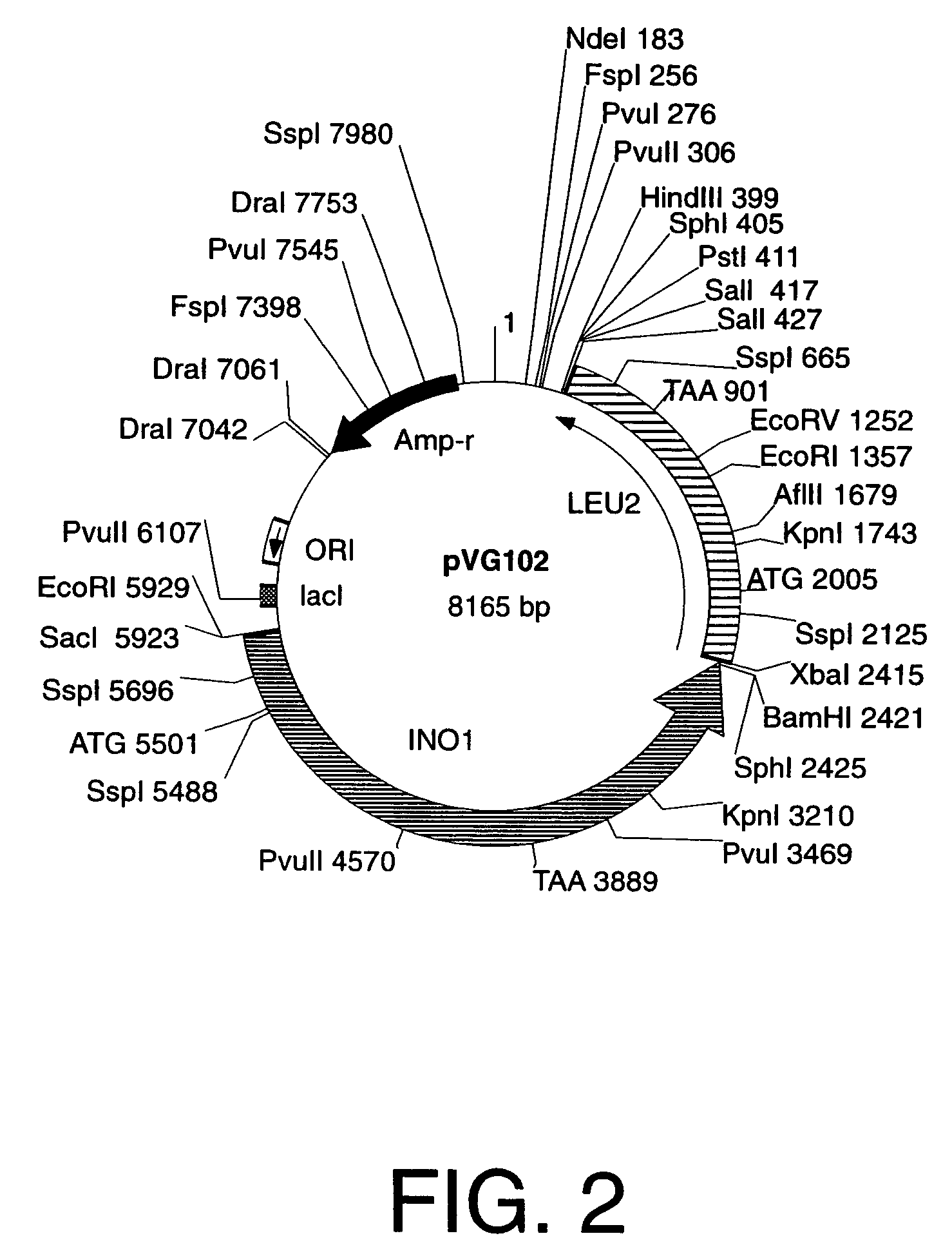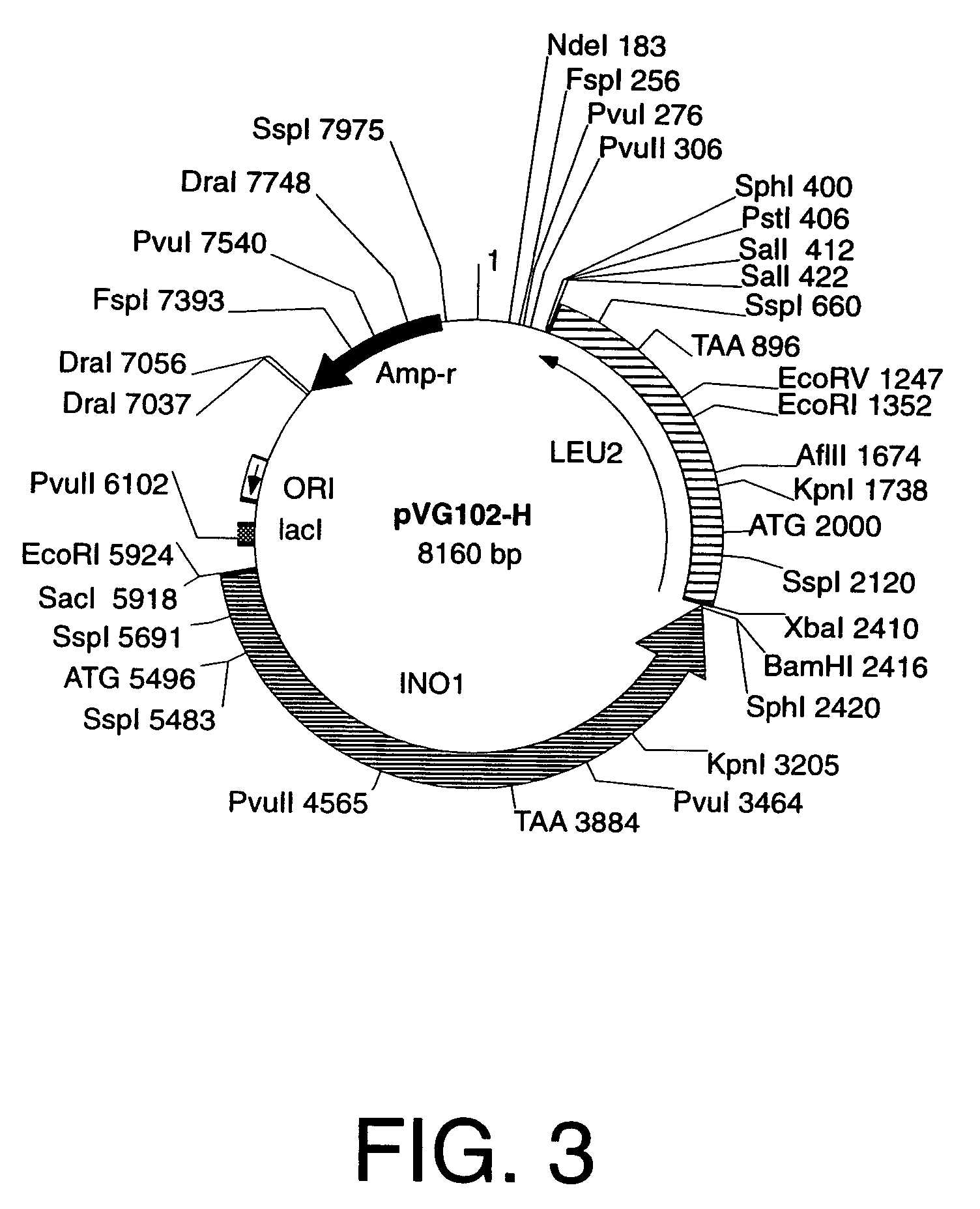Cells engineered to contain genes of interest
a technology of genes and cells, applied in the field of materials and methods for engineering microorganisms, can solve the problems of drug resistance in bacterial strains, the normal microbial flora of animals is transformed into new and potentially dangerous antibiotic resistant strains, and the world is currently facing similar problems
- Summary
- Abstract
- Description
- Claims
- Application Information
AI Technical Summary
Benefits of technology
Problems solved by technology
Method used
Image
Examples
Embodiment Construction
I. Definitions
[0054]“Yeast integration plasmid” and “integration plasmid” refer to a plasmid for integration into yeast that carries a selection gene marker, a targeting gene marker, a gene of interest, and a DNA sequence that functions as a microorganism autonomous DNA replication start site, hereinafter referred to as an origin of DNA replication, such as ORI for bacteria, or 2 μm, ARS, or CEN for yeast. After amplification, a yeast integration plasmid that is used to transform yeast must not carry any sequences for elements such as 2 μm, ARS and / or CEN that allow autonomous DNA replication in yeast. A yeast integration plasmid can only be replicated in yeast if it has been integrated into the yeast genome by a process of DNA recombination such as homologous recombination that integrates a linear piece of DNA into a specific locus in the yeast genome. However, integration plasmids may also be constructed such that the plasmids are maintained episomally in other host cells provided...
PUM
| Property | Measurement | Unit |
|---|---|---|
| concentration | aaaaa | aaaaa |
| drug resistance | aaaaa | aaaaa |
| resistance | aaaaa | aaaaa |
Abstract
Description
Claims
Application Information
 Login to View More
Login to View More - R&D
- Intellectual Property
- Life Sciences
- Materials
- Tech Scout
- Unparalleled Data Quality
- Higher Quality Content
- 60% Fewer Hallucinations
Browse by: Latest US Patents, China's latest patents, Technical Efficacy Thesaurus, Application Domain, Technology Topic, Popular Technical Reports.
© 2025 PatSnap. All rights reserved.Legal|Privacy policy|Modern Slavery Act Transparency Statement|Sitemap|About US| Contact US: help@patsnap.com



